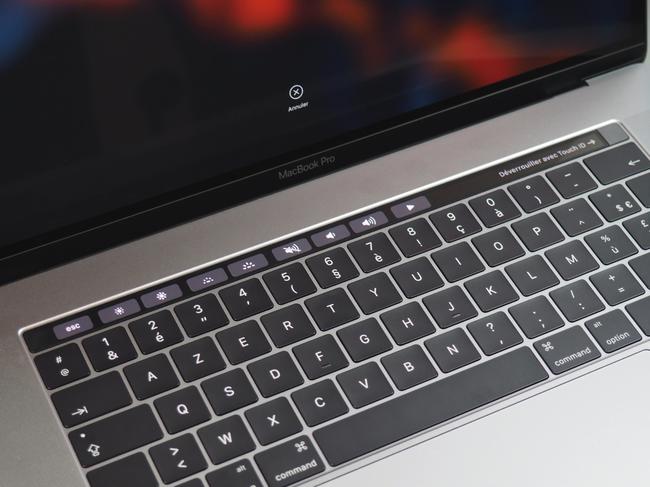Mise à jour : Après de nombreuses expérimentations, voici ce que nous pensons être les meilleurs réglages BIOS pour la plateforme AMD X570 et Ryzen 3600X de notre config gaming Tom’s Hardware, avec un point sur l’opportunité d’overclocking du Ryzen 3600X pour les jeux.Cliquez ici pour les atteindre directement.
Today we are launching the PC Gaming according to Tom’s Hardware.A simple configuration, without RGB or frills, which focuses on efficiency and silence, without forgetting scalability and ergonomics, by applying our mounting tips and our experience in gaming equipment.This PC Gaming Tom’s Hardware is on sale today at the Infomax assembler, with whom we have already been working for a few years.
PC Gaming Tom’s Hardware
1890€> InfomaxA PC gaming that promises to run your games in silence, offering an optimum performance-consumption report.And to perfect it all, since we are a little manic, this PC is designed to reduce the accumulation of dust as much as possible within the case.
We have designed the assembly of this PC ourselves in our labs, and gave the Infomax instructions to precisely reproduce the configuration that you see here.There are three 140 mm fans in suction behind a dust filter, for positive pressure inside the case (as in the good era of Silverstone).This positive pressure pushes air out of the case, prohibiting dust from entering through its various openings.All air intakes will be filtered, and each filter is easily removable for cleaning.
Note that the PC is obviously modifiable at the time of its order.We can notably choose it with or without a tempered glass window.This window has the interest of not being smoked, which allows you to see the internal configuration without RGB lighting.The glassless version offers another interest: the side plate is equipped with a thick layer of sound insulation, for even more silence.
Note that the first 20 orders of this PC will be offered a MSI GK30 Combo Gaming Kit Kit as a gift.
Configuration
| Boîtier : be quiet! Silent Base 601 (avec ou sans vitre) |
| Clairement l’un des meilleurs boîtiers que nous ayons eu entre les mains. Aucune vibration, larges filtres à poussières, grands espaces, isolation sonore totale, ergonomie quasi-parfaite. Le montage n’y est pas très aisé, mais nous avons contourné les difficultés ! |
| CPU : Ryzen 5 3600X |
| Le meilleur compromis actuel pour jouer. Notre test du 3600X montre d’excellentes performances face au 3700X, que nous voulions choisir initialement. |
| GPU : MSI RTX 2080 Super Ventus 8G |
| Une 2080 Super pour assurer un maximum de performances graphiques avec RTX, DLSS et VRS, sans regretter les dernières Radeon RX 5700 XT qui restent loin derrière en termes de performances pures. Cette carte tient les 1950 MHz en charge en jeu, et en silence ! |
| Carte mère : MSI MPG X570 Gaming Plus |
| Une carte simple, mais de dernière génération, qui permettra de passer aux générations suivantes de Ryzen sans aucun problème. Ses VRM sont surmontés des gros radiateurs qui assurent des températures de fonctionnement très correctes pour une fiabilité maximale. |
| DRAM : Corsair Vengeance LPX 2 x 8 Go DDR4-3600 CL18 |
| La meilleure fréquence de mémoire pour les Ryzen 3000, selon notre test. Et sans RGB s’il vous plaît ! |
| Stockage : SSD Samsung 860 EVO 1 To |
| Exit les disques durs mécaniques ! Un bon gros SSD de 1 To pour installer un maximum de jeuxsans craindre les ralentissement causés par les fréquentes mises à jour actuelles sur les disques durs mécaniques. Et aucun bruit évidemment ! |
| Dissipateur : be quiet! Silent Loop 280 mm |
| Nous avons choisi un bon gros watercooling avec deux ventilateurs de 140 mm. Il n’y aura donc que du 140 mm dans ce boîtier. De quoi tourner plus lentement pour plus de silence. Notre choix de ventilateurs be quiet! fut motivé par leur rapport silence-efficacité-prix exceptionnel. |
| Alimentation : Corsair RM750x 80PLUS Gold |
| Une puissance qui peut paraître sur-dimensionnée, mais pas tant que ça, sachant qu’une 2080 Super peut tirer à elle-seule jusqu’à 400 Watts en brefs pics. De quoi aussi assurer une marge pour ajouter des composants, passer à des CPU ou GPU plus puissants par la suite. |
Original montage Tom’s Hardware sauce
Building on our experience in the matter, we immediately placed the big all-in-one watercooling of Be Quiet!On the front, aspiration behind the dust filter on the case.To check the opportunity of this idea, we tested this option in the face of the most common market, with the watercooling radiator at the top of the extraction housing.
The method is simple: violently heat the PC for 40 minutes under OCCT (CPU+GPU power supply test), with a continuous measurement during the last 10 minutes of burn (ambient temperature of 24 ° C).
![[MàJ] PC gaming Tom’s Hardware : OC et guide d’optimisation X570 / 3600X [MàJ] PC gaming Tom’s Hardware : OC et guide d’optimisation X570 / 3600X](https://website-google-hk.oss-cn-hongkong.aliyuncs.com/drawing/article_results_6/2022/2/27/8f276eaa1b3d954df2abd9f97ba27d8f.jpeg)
We can see here that at the top of the case, the hot air has difficulty evacuating and the temperature of the CPU is strongly affected.The facade assembly allows you to vacuum fresh filtered air, it is simpler and more efficient to cool the CPU, but also to evacuate the ambient air out of the case.
The GPU is a little warmer, however, with the facade watercooling, just like VRM (69 ° C remains a perfectly safe temperature for VRM).The differences are however negligible compared to the temperature gain on the CPU.
The fans run much faster for the CPU when the radiator is at the top, they make much more noise while the top of the case is very hot.On the front, the hot air coming out of the radiator diffuses quickly in the case, slightly increasing the temperature of the GPU and VRM, but in negligible proportions (even the frequencies of the GPU almost identical for only two degrees of difference).
The graphics card fans run slightly faster with the facade watercooling, but we can see below that the PC remains much quieter with the watercooling radiator fixed on the front.
We therefore think that this configuration is well balanced, and mounted optimally, while offering a multitude of evolution possibilities: adding storage in large quantities, or change of GPU and CPU, especially for the next generations of Ryzen.
In practice, here are the temperatures after 2 hours of heating in play under control in QHD (maximum options, RTX max, DLSS activated):
| Air ambiant externe | 25°C |
| Air ambiant interne boîtier | 43°C |
| Température CPU moyenne | 55°C |
| Fréquences CPU moyennes | NC |
| Tensions CPU moyennes | 1,408 V |
| Température VRM1 | 59°C |
| Température VRM2 | 57°C |
| Température VRM3 | 67°C |
| Température chipset | 65°C |
| Température GPU | 69°C |
| Fréquence GPU | 1950 MHz |
| Température SSD | 45°C |
| Ventilos GPU | 1716 / 2147 tpm |
| Ventilos CPU | 829 tpm |
| Ventilo façade inférieur | 908 tpm |
| Ventilo arrière | 769 tpm |
Practical performance at play
We tested the games in Full HD (1920 x 1080) and WQHD (2560 x 1440).Each time, we have put all the options to the maximum, except the kinetic blur, systematically deactivated.Some ultra profiles do not put all the options as much as possible by default, in this case, we have not changed them.
In the most played competition line games, our config is capable of using a high -refreshing rate up to 240 Hz.See our test), Elmb activated, and the rendering was simply enjoyable!
In the AAA games very demanding graphically, our config is doing so well.Even in QHD, the fluidity is there, with great performances in Ray Tracing: Shadow of the Tomb Raider holds the 65 IPS in RTX Ultra in QHD (without DLSS), which is an excellent surprise.
Note, however, that we can see here the games that tend to be limited by the CPU.These are the classics of the genre, which we have already noticed for several tests as being very dependent on the CPU-DRAM couple: Far Cry 5 in mind, and of course Ashes of the Singularity.Overall, we can say to say that the smaller the gap between QHD and FHD, and the more demanding the game on the CPU ...
Anyway, all these figures show that this config is perfectly suited to WQHD game, which seems to us to be the definition of the moment to take advantage of all the graphic options available without breaking the bank!On a 27 inch 144 Hz screen, of course!
Abba update: better frequencies?
We applied MSI's latest BIOS (still BETA) on the machine's motherboard.This firmware injects a new Agesa 1.0.0.3abba which allows, according to AMD, to correct the too weak boost frequencies of the Ryzen 3000. Let's see what it gives with our 3600x:
We see that AMD has effectively improved the boost frequencies of the processor between 1 and 6 threads in charge.Beyond that, the frequencies are identical.A good progression, which actually allows to reach 4.4 GHz announced by AMD ... on a single thread.
Above all, there is enough to confirm the enormous failure of the launch tests of the Ryzen 3000 by AMD, of which the Agesa were not finalized ... This new invalid version, in fact, all the results presented until nowFor the Ryzen 3000… you have to retest!
Another remark: the CPU seems to be much better exploited with the Agesa Abba, which now properly charges the good hearts in a less volatile way, while the charges were much more chaotic before.Suddenly, more hearts remain in standby, which could actually result in a decrease in CPU consumption when the load does not occupy all hearts.
On the other hand, our CPU still used the first CCX in priority, while its best heart is supposed to be on the second CCX.The fact remains that the latter does not seem to boost higher than the best heart of the first CCX, which is now well used in priority.
Last remark: at rest, the frequencies descend much lower according to Ryzen Master.Up to 60 MHz only, with a minimum average voltage of 0.26 V only at rest, according to our first observations.What also reduce CPU consumption.
Optimization guide
Facility
BIOS Settings
After having tested almost all possible settings, here are our stable settings offering the best performance compromise (see the tests below).
To compensate for the relaxed timings of the DRAM kit in CL18, we have a little overclock the manufacture from 1800 to 1866 MHz and the DRAM in DDR4-3733 to remain synchronous, without changing any timing, but by increasing the tension of the bars to 1,38 V to ensure (1,4 V real).In "auto", the tension of the NB/SOC of the CPU exceeded 1,12 V, which seemed a bit high.We therefore applied an offset to -0.0375 V to go under 1.1 V.
Note that this value of 1866-3733 Synchronous was originally planned for the Ryzen 3000, as shown in the image above, then AMD finally dropped the synchro at 1800-3600, certainly to ensure rare problemsstability.So you have a good chance of shooting in 1866-3733 without worries, unless you lost to the CPU lottery.
| XMP 2.0 complet DDR4-3600 1,35 V | Kit Corsair CMK16GX4M2D3600C18 |
| CL (tCL) | 18 |
| RCD (tRCDRD et tRCDWR) | 22 |
| RP (tRP) | 22 |
| RAS (tRAS) | 42 |
| RC (tRC) | 64 |
| RFC1 (tRFC1) | 630 |
| RFC2 (tRFC2) | 468 |
| RFC4 (tRFC4) | 288 |
| RRDL (tRRD_L) | 10 |
| RRDS (tRRD_S) | 8 |
| FAW (tFAW) | 40 |
| Command Rate | 1T |
Be careful for the DRAM, it is sometimes necessary to restart twice and still adjust certain timings which sometimes do not change the first time (especially the command rate, very important).On the other hand, some secondary timings are lower in car, so we left them like this.
With these PBO settings, you can grab a few tens of MHz for each load level, which is already not bad, to keep a correct tension on the CPU.Be careful, do not touch the other settings because they will all lower the Boost Monocoeur frequencies of the CPU.Also leave the Line Calibration in Auto, because it will also lower the Boost Monocoeur frequencies by forcing too much on the tension.
Note that we can see here that the processor is "overclockd automatically by default", by a very efficient autonomous management system.What really reduce the interest of manual overclocking!
We have also set to the small onions the management of the speed of fans in the "hardware monitor" part, here are our recommended settings to have a good cooling and an almost inaudible PC at rest.Do not touch the water pump regulator, which must remain by default constantly in 12 V.
The suction front fan is always a little faster than the rear extraction fan to keep ever more air as a starter than output, in order to limit the suction of dust by the other filter -free openings of the case (try toalways keep a positive pressure).
| Ventilateurs CPUAiO | Cablé Temp CPU | |||
| Température | 0 | 55 | 75 | 90 |
| Vitesse (PWM en %) | 0 | 40 | 65 | 100 |
| Ventilateur frontal (System 4) | Cablé Temp MOS | |||
| Température | 0 | 45 | 60 | 65 |
| Vitesse (tension en V) | 0 | 5,52 | 10,32 | 12 |
| Ventilateur arrière (System 1) | Cablé Temp MOS | |||
| Température | 0 | 40 | 65 | 75 |
| Vitesse (tension en V) | 0 | 4,08 | 9 | 12 |
| Ventilateur chipset | Cablé Temp Chipset | |||
| Température | 60 | 85 | 90 | 95 |
| Vitesse (PWM en %) | 13 | 40 | 80 | 100 |
BIOS is able to read the GPU temperature, but does not offer to wire the fans on this value.We hope that a next version will allow it.Otherwise, we wrap the boxes for the temperature of the motherboard VRM.
Remember to save your organic adjustment profiles!
We hope that these optimizations will still be valid for the next BIOS update provided by the manufacturer, with a new AGESA 1.0.0.4.Signed AMD.
Overclocking or not?
Graphic card
MSI's RTX 2080 Super Ventus does not offer much overclocking margin for its GPU.We advise to make an automatic overclocking scanner under afterburner, which adds about 50 MHz to the Boost GPU curve.On the other hand, you can please yourself on the RAM, which seems to have a big margin of OC on all the cards, between 750 and 1250 MHz more.We stayed at +1000 MHz in a perfectly stable way during our many tests.Note that if you want to go further in overclocking, it is possible to opt for the Gaming X Trio of MSI version for only 9 euros more at Infomax:
RAM
The RAM is the subject of a slight overclocking in the optimizations offered previously, in synchronous mode with the manufacture at 1866/3733 MHz.Those who want to go further will be able to try the 1900/3800 MHz, but without guarantee of stability on the manufacturing side, and certainly with some timing changes on the RAM side.Without forgetting to reduce the negative offset on the CPU NB/SOC part.We tried on our machine, it ended with a Clear Cmos!
Processor
For the CPU, it's already more complicated, especially for games.Our CPU does not rise to more than 4325 MHz on all hearts (logically blocked on the maximum frequencies of the weakest hearts), for a fairly high voltage of 1.41 V. Here are our results in play, and the differences are negligibleIn half of the games, often bordering on the simple margin of error.We still observe a certain logic in the games most reactive to changes in CPU/RAM settings:
If you are doing a lot of very multithreaded activities (video encoding for example) overclocking at 4325 MHz will be more profitable.But the high tension required in input does not inspire us confidence.Our opinion is to stick to an optimized PBO according to our settings, which has the advantage of leaving freedom to certain hearts to boost more than 4325 MHz if necessary, while consuming less energy on average.
Note that the monocoeur boost does not reach the same frequencies according to the quality of the hearts (random) of the CPU.For our copy, here are the maximum frequencies that we have achieved for each heart.Two of them are 4325 MHz, which corresponds to the maximum overclocking of the CPU on all hearts.Also note that the CPU VID is perfectly up to the point, the least efficient hearts will be applied a higher voltage to hold the pace.
PC Gaming Tom’s Hardware
1890€> Infomax









Farewell Touch Bar, I won't regret...
Caddy, the only web server to use H...
Burkina Faso / Gabon (TV / Streamin...
What the future of work will not b...